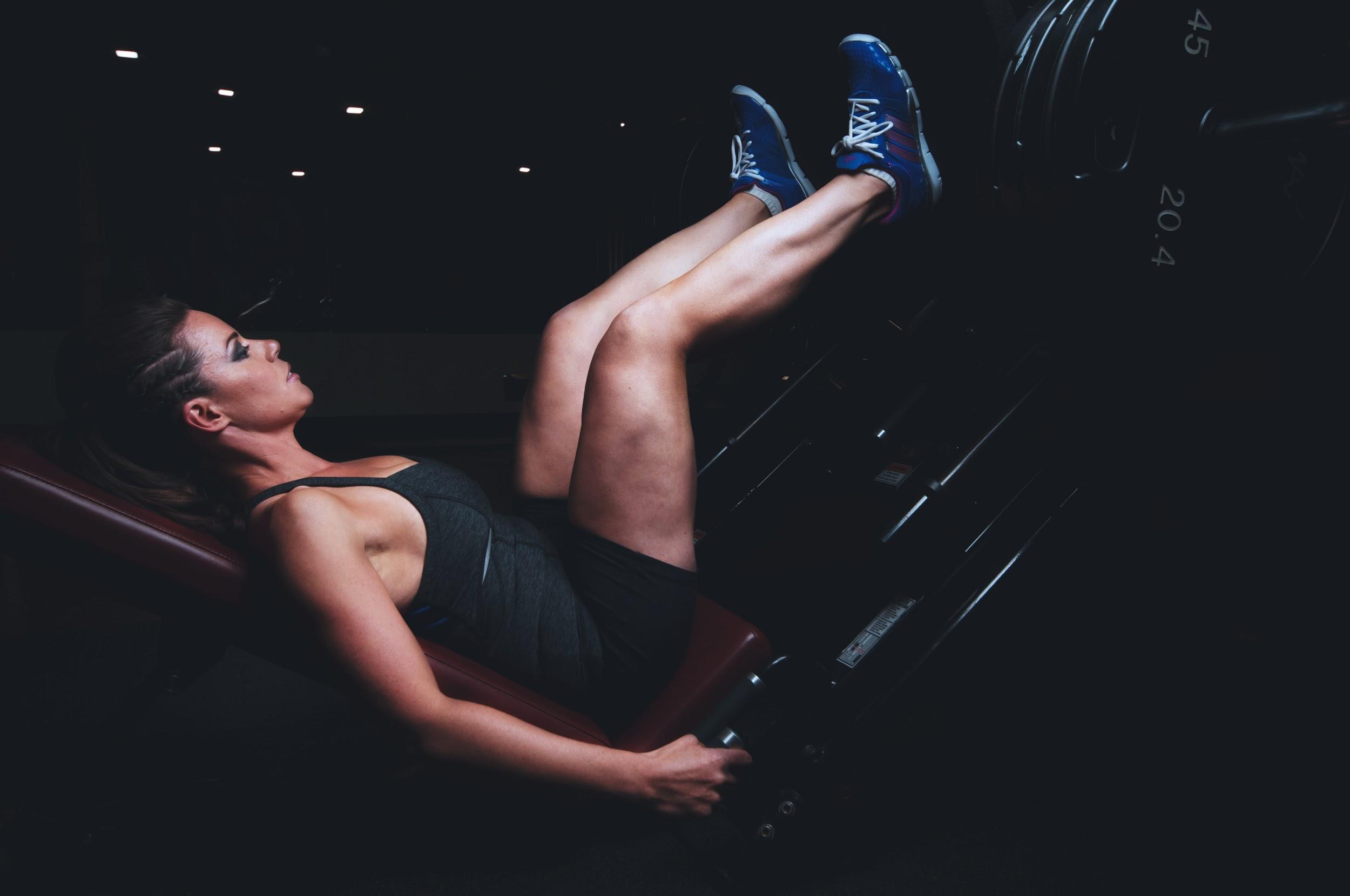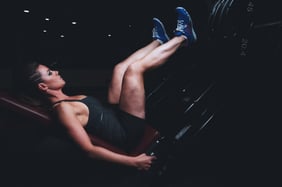
How to Avoid Lower Back Pain While Working Out
Odds are you know at least one person who has had a lower back injury. The lower back is prone to injury thanks to poor posture, repetitive stress, twisting, or sudden movements. Even lifting a heavy object can contribute to the development of microscopic tears or the stretching of your ligaments and muscles. When working out, you’ll want to take special care to avoid the type of injury that could sideline you for weeks, sometimes much longer.
Core Strengthening Exercises
Every muscle group has another group of muscles that help to support it. Your lower back is supported by your core, so including core strengthening movements in your workouts is critical. Crunches, of course, aren’t great if you already have signs of lower back problems. Start with lower-impact exercises as simple as walking while paying attention to your posture. Your core and back will work together and you’ll increase bloodflow to your lower back.
Modify Your Hamstring Stretch
Your lower back and your hamstrings are directly related, so if those hamstrings get sore or tight your lower back is bound to follow. The old-school hamstring stretch involved standing straight up and then bending forward to try and touch your toes. This downward movement puts a lot of strain on your lower back. Instead, try putting your leg up on a chair and tilting forward. Push your hips backward and keep your back as straight as you can as you reach about 6 inches above your foot. Do not bounce back and forth as you do this exercise.

Adjust Your Treadmill
Do you love pounding out a few miles on your treadmill every day? Lower back pain from treadmill work is usually the result of poor posture. Make sure you have a relaxed but erect spine. Your head should be straight and you should pay attention to your abs. One of the worst things you can do is hold the bars of the treadmill while you run. Doing so causes you to lean forward, putting a ton of pressure on your lower back. You may also want to adjust your treadmill so you are running on an incline of at least 1 or 2, to better emulate a more natural surface.
Talk to a Fitness Coach
Make sure your form is on point when lifting weights. A personal trainer or coach can help you adjust your lifting techniques to avoid excess strain on your lower back. If you’re working on bodybuilding or competition-style lifting, you may need to discuss wearing lower back support to aid in your efforts as well.
Subscribe Here!
Topics
- Accessible Fitness Machines (1)
- American Diabetes Association (1)
- American Heart Month (2)
- Awareness (3)
- Benefits of Kale (1)
- Best Fitness Websites (1)
- Breast Cancer (1)
- Breast Cancer Awareness (4)
- Buyer Beware (1)
- Cancer (1)
- Cancer Awareness (4)
- Carbohydrates (1)
- Cardio Aid (2)
- Cardio Equipment (7)
- Celebrity Fitness (1)
- Childhood Obesity (2)
- Christmas List (1)
- Commercial Fitness (12)
- Community (1)
- Corporate Wellness (5)
- Cortisol (1)
- Crossfit (2)
- Crosstrainer (1)
- Deals and Discounts (10)
- Diabetes Awareness (1)
- Diamondback Ellipticals (1)
- Diet (1)
- Diet and Nutrition (31)
- Diet Myths (1)
- Dietary Lifestyle Options (1)
- Eating Clean (1)
- EFX (1)
- Elliptical (14)
- Ellipticals (6)
- ElliptiGo (2)
- Energy (1)
- Exercise (6)
- Exercise Accessories (1)
- Exercise and Diabetes (1)
- Exercise at Work (1)
- Exercise Bike (6)
- Exercise Equipment (26)
- Exercise Equipment Demos (11)
- Exercise Machine (5)
- Exercise Prevents Cancer (1)
- Exercising at Night (1)
- Expresso Bike (2)
- Expresso Stationary Bike (2)
- Fat Loss (7)
- Fitness (23)
- Fitness Accessories (2)
- Fitness and Exercise (99)
- Fitness at Work (1)
- Fitness Blogs (6)
- Fitness Books (1)
- Fitness Education (75)
- Fitness for Special Needs (1)
- Fitness Gifts (1)
- Fitness Journey (5)
- Fitness Machine (11)
- Fitness Machines (4)
- Fitness Motivation (13)
- Fitness on the Go (1)
- Fitness Room (2)
- Fitness Stocking Stuffers (1)
- Fitness Technology (1)
- Fitness Tips (2)
- Fitness Tracker (1)
- Fitness Videos (1)
- Fitness Wearables (1)
- Flexibility (2)
- Food Myths (3)
- Fun and Educational Videos (9)
- Functional Training (3)
- Getting Back in Shape (1)
- GFX (1)
- Gift Ideas (1)
- Gluten Free (1)
- Goals (1)
- Gym Safety (1)
- Health (6)
- Health and Fitness (96)
- Health Myths (1)
- Healthy Eating (2)
- Healthy Food (6)
- Healthy Lifestyle (3)
- Healthy Recipes (4)
- Heart Disease (1)
- Heart Health (11)
- HIIT (7)
- HIIT at Home (7)
- Hip Hop (1)
- Holiday Eating (1)
- Holiday Fitness (1)
- Holiday Meals (1)
- Holiday Parties (1)
- Holidays (1)
- Home Fitness (77)
- Home Fitness Equipment (43)
- Home Fitness Machine (2)
- Home Gym (19)
- Home Gym Design (4)
- Hospitality Fitness (1)
- How to Get More Energy (1)
- Hydration (1)
- IFT (1)
- Injury Prevention (1)
- Insider (1)
- Inspiration (1)
- Inspire Ellipticals (1)
- Kale (1)
- Kids Fitness (2)
- Let's Move! (1)
- Low Cholesterol (1)
- Meal Planning (3)
- Men's Fitness (2)
- Metabolism Booster (1)
- Michelle Obama (1)
- Mobility (3)
- Motivation (1)
- Motivation to workout (4)
- Movember (1)
- New Product News (24)
- New Products (1)
- Nu-Step (1)
- Nustep (1)
- Nutrition (2)
- Nutrition Myths (2)
- Office Exercise (1)
- P3 News (7)
- P3 Retail Store News (12)
- Paleo (1)
- Partnership for a Healthier America (1)
- Personal Training (1)
- Postpartum Exercise Routine (1)
- Precor (17)
- Precor Ellipticals (6)
- Precor Treadmills (4)
- Push Pedal Pull (28)
- Recovery (1)
- Recumbent Bike (4)
- Recumbent Cross Trainers (1)
- Resistance Training (2)
- Resolutions (1)
- Rowing Machine (7)
- senior fitness (1)
- silver sneakers (1)
- Site Blog (33)
- Stay Active During Holidays (1)
- Strength Training (11)
- Stress (1)
- Stress Weight (1)
- Stretching (2)
- Strong is the New Skinny (1)
- Successful Resolutions (1)
- Trade in Elliptical (1)
- Trade in Fitness Equipment (1)
- Trade in Treadmill (1)
- Treadmill (13)
- Treadmills (7)
- True Treadmills (1)
- Used Elliptical (1)
- Used Equipment (3)
- Used Exercise Machines (1)
- Used Fitness Equipment (1)
- Used Treadmill (1)
- Valentine Workout (1)
- Valentine's Day (1)
- Vegan (1)
- Vibration Training (5)
- Warming Up (1)
- Weight loss (17)
- Weight Loss Booster (1)
- Weight Training (3)
- Women's Fitness (4)
- Working Out (5)
- Workout Inspiration (2)
- Workout Partner (2)
- Workouts (5)
